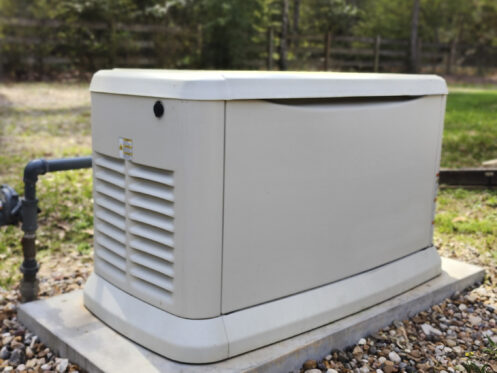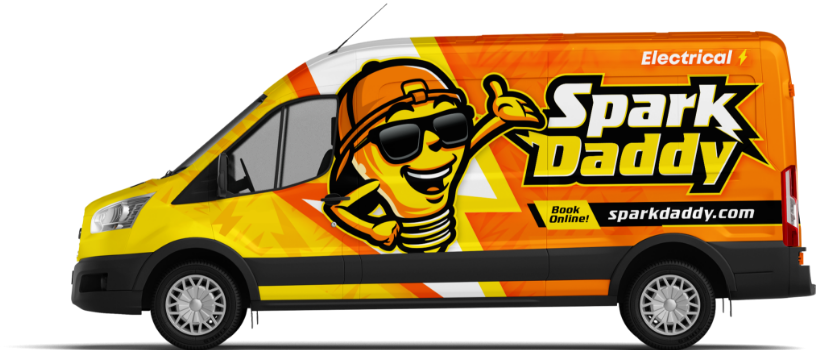As the frequency and intensity of storms keep rising, our power grid grows increasingly fragile. As a result, homeowners in Ballwin, MO should expect more frequent outages in the coming years. Installing a generator is one of the best ways to prepare for that. Having your own power generation capacity provides peace of mind. You can install a generator to power essential appliances or your entire home. No matter your choice, you’ll want to know something about the installation process first. Here is how a professional electrician would install a generator in your home.
Choosing a Backup Generator Capacity
Before installing a generator, you will work with your electrician to assess your needs. The first question you must answer is how much of your home you’d like powered during a grid failure. At a minimum, most homeowners want to keep their HVAC, refrigerator, lighting, and oven powered. However, those things alone have some hefty power demands. Additionally, it’s customary to choose a generator capable of at least 20% more power generation than your base load. That gives you some flexibility and ensures your generator won’t suffer excess wear and tear during prolonged use.
You might also choose a generator that keeps your entire home powered during an outage. Many homeowners find that their essential appliances make up most of their power demand. In those situations, you may only need a slightly larger generator to power your whole home. Additionally, a whole-home generator may require fewer electrical modifications to your home. That can bring the price points even closer together.
The Installation Process
Once you choose a generator, it’s time to begin the installation process. The steps involved are as follows.
A Thorough Site Inspection
The first step in the generator installation process is inspecting the installation site. The electrician will evaluate the spot where you plan to put the generator. That includes ensuring adequate access to deliver the generator to its installation location.
Then, the electrician will look at the routing of your home’s existing electrical wiring in relation to the site. They’ll also check your home’s main electrical panel to see if it has space to accommodate a transfer switch. If not, they’ll advise you on the necessary upgrades. If you plan to purchase a generator just for essential appliances, they’ll note which circuits supply them. You’ll need additional space near your main panel to relocate those circuits to a sub-panel.
Finally, the electrician will note the specific details of your installation site to apply for the necessary permits. Installing a backup generator requires electrical permits at a minimum. You’ll also need building permits if your installation includes a fuel storage tank.
Selecting Fueling Options
The next step is settling on a fuel option for your new generator. Generally speaking, backup generators run on either natural gas or propane. The electrician can advise you on your options and walk you through the pros and cons of each.
They’ll examine your meter and appliances if you’re using an existing natural gas connection. That will let them know if your infrastructure can support a new generator. Sometimes, you’ll need upgrades to your incoming natural gas supply line and meter.
If your home doesn’t have a natural gas connection, you might choose a propane storage tank instead. In that case, the electrician will ensure you have space for one. You can opt for either an above-ground or buried storage tank. Most propane-fueled generators can run on a full storage tank for up to two weeks.
The Permitting Process
After collecting the necessary information, your electrician will apply for the required permits. The process includes drawing up a complete site installation plan. It can take several weeks to obtain the permits. Until issued, no further work on your generator installation may proceed.
Scheduling and Delivery
With the relevant permits approved, your electrician will schedule a delivery date for your generator. On the appointed day, you should expect your generator and installation materials. If your generator requires a fuel storage tank, it will arrive, too. With everything on-site, the electrician will check that nothing’s missing. They’ll also check that you’ve received the right generator according to your order.
For generators with buried storage tanks, the electrician may elect to prepare your site for them on delivery day. For that, they’ll coordinate with the necessary subcontractors handling the work. That may include a contractor handling the tank burial and a gas plumber making the eventual connections.
Installation Day
With preparations made, installation of your generator can proceed. On your installation day, the electrician will first supervise the placement of a concrete pad. It will provide a stable platform for your generator and support its safe operation. Next, they’ll have your new generator moved to the pad and placed on top.
While the electrician oversees the generator’s progress, other contractors will do their parts. The gas plumber will run new piping from your home’s gas supply or your new storage tank. If you’re using a buried storage tank, the relevant contractor will bury it in place. Once given the go-ahead by the electrician, the plumber will connect the necessary fuel lines.
Once the generator is ready, the electrician will install the necessary wiring. They’ll install a transfer switch in your existing electrical panel or a standalone one. You can opt for an automatic transfer switch that activates and cuts to your generator during an outage. You can also choose a manual switch that you must activate yourself. If necessary, they will also segregate your essential circuits. With those preparations complete, they’ll connect your generator to your home’s wiring.
Generator Testing
After the installation, the electrician will begin testing your new generator setup. They’ll start by activating your generator to make sure it starts and runs smoothly. If you have a manual transfer switch, they’ll activate it to simulate a power outage. Then, they’ll check your home’s circuits to see they’re appropriately powered.
The testing process is slightly different if you’ve chosen an automatic transfer switch. After testing your generator’s operation, the electrician will turn it off. Then, they’ll turn off your home’s main power supply. That should make the transfer switch start your generator and switch your home to its supply.
Final Inspections
Finally, your new generator installation isn’t complete until local authorities inspect it. That’s a mandatory part of the permitting process. It can take anywhere from a day to a week to schedule a visit from an inspector. The time depends on their workload and can vary seasonally. Your electrician will handle the scheduling and be there when the inspector arrives. Once they approve the work, your generator installation is officially complete.
Generator Installation Experts
Spark Daddy is your source for quality standby generators in Ballwin. We sell and install the latest home generators from Generac, the industry leader. Our master electricians have over 50 years of experience, so your home couldn’t be in better hands. We can also handle all of your home’s other electrical service needs. We do everything from simple repairs to voice and data wiring and whole-house rewiring. We can even offer you financing on approved credit if you need it to pay for an electrical project. So, when you’re ready to add a standby generator to your Ballwin home, call Spark Daddy immediately!




